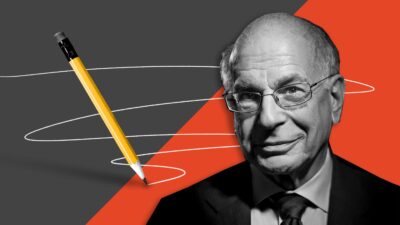Shuoxin Cheng, Nate Zettna, Helena Nguyen and Yumeng Yue

The ABC behind successful teamwork
There is a scene in the Wes Anderson film The Grand Budapest Hotel where the main character, the hotel’s masterful concierge (portrayed by Ralph Fiennes) strides through the expansive lobby of the eponymous hotel issuing instructions to the new Lobby Boy who is trailing in the wake of his imperious boss.
While film buffs assert Anderson’s film explores the themes of fascism, nostalgia, friendship and loyalty, the plot portrays the hierarchical staff relationships that produce the luxury hotel’s flawless customer service. Well, we would say that, since we have just completed a meta-analysis examining the influence of the five distinct teamwork mechanisms (i.e., affective, behavioural, cognitive, motivational, and perceptual) on different types of service outcomes (e.g., customer satisfaction, service quality, and financial outcomes).
| Teamwork mechanisms | Definition |
|---|---|
| (A)ffective | Team members’ collective feelings and emotions, including relationships between members as well as their attitudes towards others. |
| (B)ehavioural | Activities whereby team members work together to accomplish collective goals, manage interpersonal relationships, and reflect on previous accomplishments, as well as prepare for future actions. |
| (C)ognitive | The extent to which team members have a shared mental model, collectively understand core tasks, solve challenges together, and come up with new ideas through the effective management of knowledge within their service team (e.g., team learning). |
| (M)otivational | The extent of team members’ collective intensity and effort towards shared team goals. |
| (P)erceptual | The extent to which team members have a shared understanding of how things should be done or expectations within their roles (e.g., team norms). |
With all due respect to Anderson’s artistic vision, in modern service delivery businesses’ teams, not rather than autocratic bosses, are undeniably essential to commercial success. Teams are the foundational building blocks of modern organisations. Service sector businesses, in particular, such as hospitals, department stores, banks, consulting firms, and hotels (!) increasingly emphasise effective teamwork, in the pursuit of service excellence.
Consider the luxury hotel industry. We’re observing a surge in service teams focused on providing customers with high-quality service. Expedited check-in services, personalised room arrangements, bespoke dining experiences, and even tailored fitness and spa amenities are some of the heightened experiences available to guests. Likewise, moving beyond the conventional medical practices of surgeons and medical specialists, patient-centric medical teams have risen to prominence in the healthcare sector. These specialised medical teams play a pivotal role in optimising the overall patient experience.
However, unlike traditional team settings, service teams face unique challenges as they engage with a variety of external stakeholders, such as customers, business clients, and patients. The many different types of service work prompted us to ask: is there a ‘right’ type of teamwork for the different types of service work?
To answer this question, our recent meta-analysis drew from 82 studies (encompassing a total of 14,291 service teams) and examines the influence of the five distinct teamwork mechanisms (i.e., affective, behavioural, cognitive, motivational, and perceptual) on different types of service outcomes (e.g., customer satisfaction, service quality, and financial outcomes).
Maximising value through teamwork mechanisms
For the service sector as a whole, we found that cognitive teamwork mechanisms emerged as the keystone for elevating customer evaluations. This means that when team members collectively and effectively utilise their knowledge and ideas, customers have a more enriched service experience. For instance, teams that frequently reflect on customer feedback and have members working together to improve work processes are better equipped to continuously meet the needs of their customers.
Motivational and perceptual teamwork mechanisms, on the other hand, had distinct influences on financial outcomes over other types of teamwork. When team members have collective recognition, organisation, and interpretation of situations in their service work context (perceptual teamwork), as well as collectively pooling efforts towards shared team goals (motivational teamwork), this would more likely result in desirable financial results. Starbucks is a great example. Think about when you walk into one of their branches, being greeted collectively by multiple staff members. Most Starbucks employees have this shared perception of what is expected in their roles, especially a shared understanding that providing quality service and taking care of customers is crucial. Of course, this includes finding their suggestion of adding a muffin to your order more convincing. Therefore, implementing these teamwork mechanisms often leads to tangible gains, including amplified purchase volumes and frequencies.
The right teamwork mechanisms for the right type of service
The impact of different types of teamwork on service outcomes varies depending on the type of service. In contact-intensive services (e.g., retail, catering, and hospitality) and knowledge-intensive services (e.g. legal, business consulting, and medical services), nurturing affective and motivational teamwork mechanisms are paramount. Practically, this means that fostering positive emotions, and goal orientation, are crucial. Think about your visit to the hospital. You would want a team of nurses and doctors who collectively show compassion and genuine emotions towards you. This makes you appreciate their service much more.
On the other hand, in technology-intensive services like engineering, mobile, and web-based services, more importance should be placed on fortifying behavioural teamwork mechanisms. We anticipate this because there is a need to effectively plan and coordinate team members so that they understand and manage the technological complexities of the work in these services efficiently. A study of customer service engineer teams found that transition team processes (e.g., team planning and evaluating work methods) were positively associated with higher customer satisfaction. Without effective planning and coordination among staff members, teams in this line of work risk taking time and resources away from actually serving the customers and having to handle technological challenges.
Our findings highlight that not only is teamwork essential for success in the service sector, but also that organisations need to identify which type of teamwork is best suited to the service being provided. Both of these elements are needed to support the central outcomes organisations seek to achieve.
Shuoxin is a PhD Candidate at the University of Sydney Business School. Their thesis involves a collection of studies that advances a multilevel, multi-perspective, socially contextualised understanding of employee voice.
Nate is a Lecturer in Human Resource Management in the Discipline of Work and Organisational Studies at the University of Sydney Business School. His research examines various aspects of team effectiveness, including team leadership, frontline service teams, and team well-being and performance.
Helena is a Professor in Work and Organisational Studies and Co-Director of the Body, Heart and Mind in Business Research Group at the University of Sydney Business School. Her research is multidisciplinary and her interests include the role of emotions and cognition at work, human performance, work engagement, and well-being.
Yumeng is a Senior Lecturer in Human Resource Management at the University of Edinburgh Business School. His research mainly focuses on the thinking, feeling, and behaviours of frontline service employees, and how these impact their well-being, service quality, and potentially other stakeholders such as customers and co-workers.
Share
We believe in open and honest access to knowledge. We use a Creative Commons Attribution NoDerivatives licence for our articles and podcasts, so you can republish them for free, online or in print.







